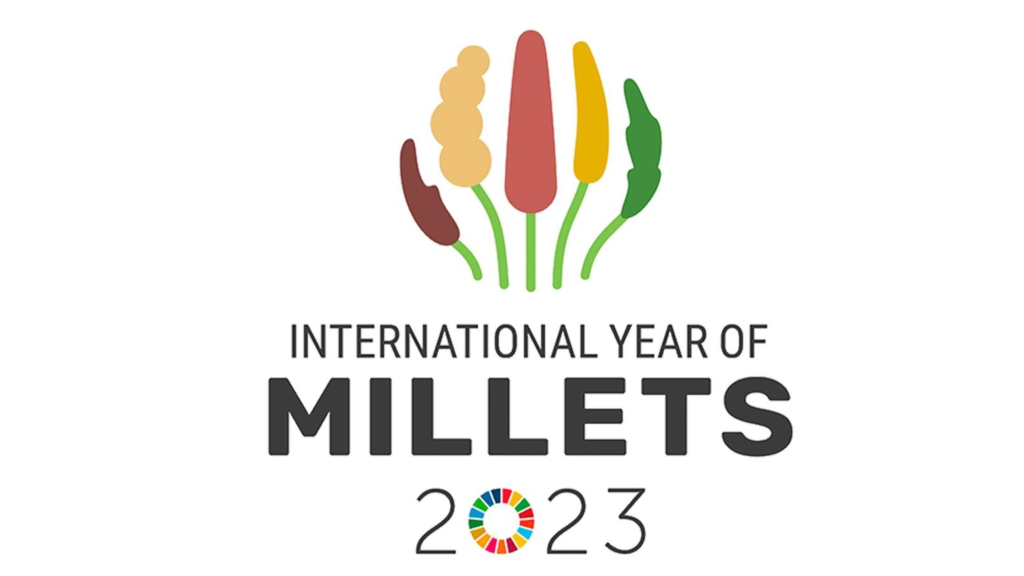
Introduction:
The United Nations General Assembly officially declared 2023 as the International Year of Millets (IYM 2023), placing the spotlight on these small but mighty grains. Why did millets receive such global recognition? Let’s delve into the compelling reasons behind their rise to prominence.
Imagine a food that boasts a nutritional profile exceeding rice and wheat, thrives in harsh environments with minimal water, and empowers smallholder farmers. This isn’t a futuristic dream; it’s the story of millets, and 2023 was their year to shine.
The Powerhouse Potential of Millets
Millets are a diverse group of whole grains, including sorghum, finger millet, pearl millet, foxtail millet, and many more. They offer a multitude of benefits, making them a powerhouse for both individual and global well-being.
Nutritional Powerhouse
Millets are naturally gluten-free and packed with essential nutrients like protein, dietary fiber, vitamins, and minerals. Notably, finger millet is a champion of calcium, containing almost eight times the amount found in rice. They are also a good source of complex carbohydrates, providing sustained energy throughout the day.
Climate Champions
Unlike water-intensive crops like rice, millets thrive in dry and harsh environments with minimal water requirements. This makes them ideal for regions facing water scarcity and the challenges of climate change. Their drought tolerance and adaptability to different soil conditions contribute to their environmental sustainability.
Boosting Food Security
As the world grapples with climate change and population growth, millets offer a promising solution. Their resilience and adaptability to different environments contribute to food security, especially in vulnerable regions. Their short growing season allows for multiple harvests per year, further contributing to food security and dietary diversity. Discover how millet is a solution for sustainable agriculture: Click Here.
IYM 2023: A Year of Action and Progress
The designation of 2023 as the International Year of Millets served as a catalyst for various initiatives, contributing to significant progress:
Raising Awareness
IYM 2023 played a crucial role in raising global awareness about the nutritional and environmental benefits of millets. This increased awareness has led to a growing interest in incorporating millets into various culinary creations and dietary choices.
Encouraging Research and Development
IYM 2023 provided a platform for encouraging research and development efforts towards improving millet varieties, processing techniques, and market access. This resulted in advancements in breeding programs to develop new high-yielding and climate-resistant millet varieties, as well as improved processing techniques for better shelf life and product diversification.
Promoting Consumption
IYM 2023 witnessed numerous campaigns and events around the world promoting millet consumption through innovative recipes and culinary exploration. This helped to showcase the versatility of millets and inspire consumers to explore them beyond traditional dishes.
Conclusion:
While 2023 may have been the official Year of Millets, their journey towards wider adoption and appreciation continues. As consumers become more conscious of health, sustainability, and dietary diversity, millets are poised for continued growth.
What are your thoughts on the potential of millets? Have you tried incorporating them into your diet? Share your experiences and questions in the comments below!
References:
https://www.fao.org/millets-2023/about/en
https://www.icrisat.org/
https://sdgs.un.org/un-system-sdg-implementation/united-nations-environment-programme-unep-54139
